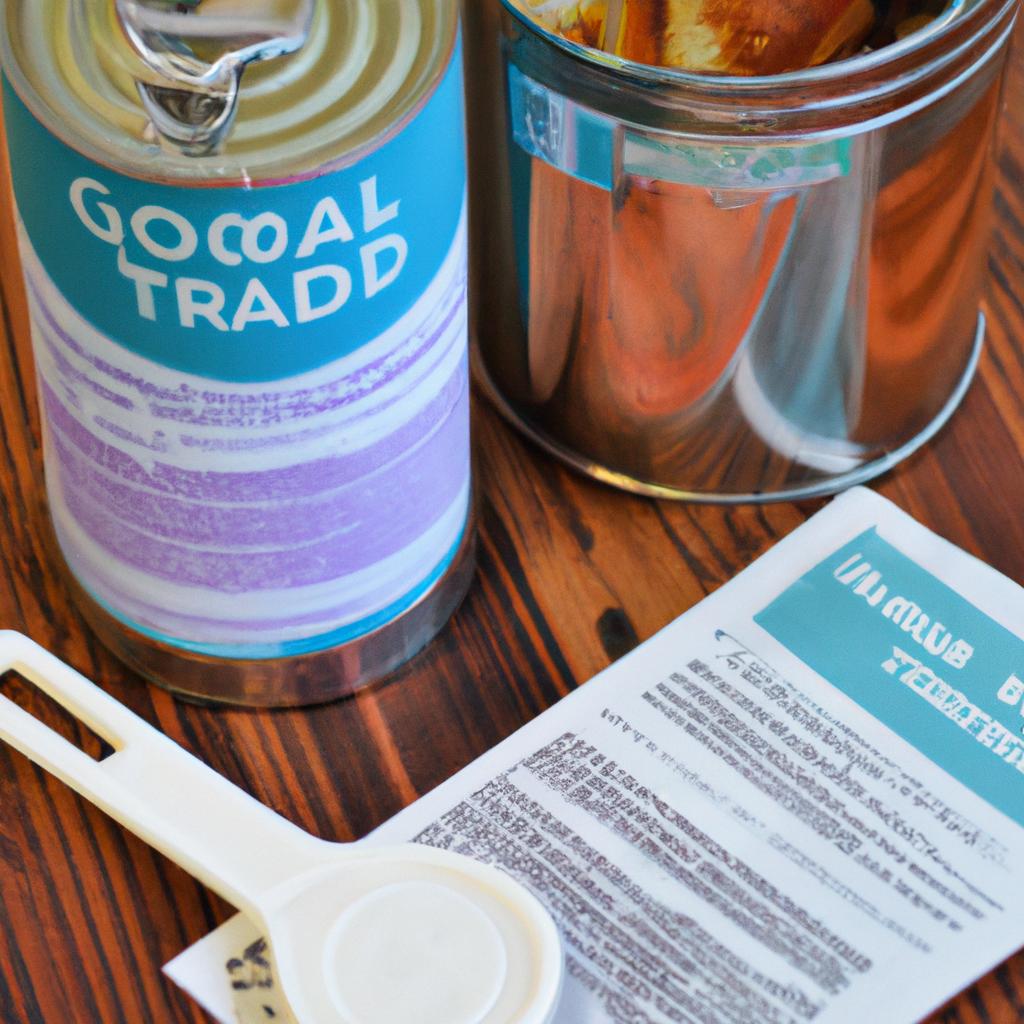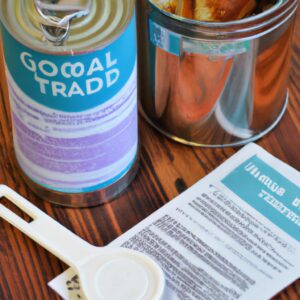Introduction
Foodborne illnesses are illnesses that result from the consumption of food and drinks that contain harmful bacteria, viruses, parasites, or toxins. These illnesses can be caused by a variety of factors, including improper food handling and storage practices, poor hygiene habits, and cross-contamination. It is important to practice safe handling and storage practices in order to reduce the risk of contracting a foodborne illness.
This guide will provide an overview of safe handling and storage practices that can help prevent foodborne illnesses. We’ll discuss food storage basics, refrigerator safety, freezer storage safety, reheating tips, foods to avoid, clean dishes, leftovers, prevention of cross-contamination, and foods to eat fresh. In addition, we’ll look at foods for special situations and provide helpful resources related to food safety.
Food Storage Basics
Proper storage of food items is key to preventing the spread of foodborne illnesses. There are some important tips to remember to ensure that your food remains safe to consume.
Refrigeration Temperatures
Most food items should be stored at a temperature below 40°F. This can be achieved by setting your refrigerator between 33°F and 40°F. If you’re unsure, you can use an appliance thermometer to check the temperature.
Freezing Temperatures
Most frozen food items should be stored at a temperature below 0°F. This can be achieved by setting your freezer between -10°F and 0°F. Again, if you’re unsure, you can use an appliance thermometer to check the temperature.
Hygiene Practices
It’s important to practice good hygiene when preparing food. This includes washing hands and surfaces regularly, not cross-contaminating food items, and avoiding contact with raw meats. Always make sure to read food labels for expiration dates and other instructions related to food preparation.
Labeling Tips
Make sure to always keep track of the food you have stored. Label any foods stored in the refrigerator or freezer with the date and type of food. This way, you will know when the food needs to be used up before it spoils.
Refrigerator Safety
Keeping food safe in the refrigerator is an important part of preventing foodborne illnesses. Following certain guidelines can help prevent spoilage and contamination. Here are some tips to remember when storing food in the refrigerator:
- Store raw meats, poultry, and eggs away from other food items to avoid cross-contamination.
- Be aware of different food items’ shelf life—for example, raw ground beef should not be stored for more than one to two days.
- Do not leave cooked or prepared food in the refrigerator for more than three to four days.
- Keep food away from warm appliances, such as the dishwasher and oven.
- Set your refrigerator temperature to below 40 degrees F.
- Label food items with the date they were stored so you know when they need to be used by.
By following these tips, you can keep your food safe and ensure that it does not cause any foodborne illnesses.
Freezer Storage Safety
Freezer storage is an important part of food safety. It is essential to understand how to properly store food in the freezer. Here are some tips to help you keep your food fresh and safe.
- When storing items in the freezer, be sure to wrap them tightly in airtight packaging. This will help to prevent freezer burn and preserve the taste and freshness of your food.
- Be sure to set the temperature of your freezer to below 0 degrees F for optimal food safety.
- It is best to store food items such as meat, fish, and poultry for no longer than two months in the freezer. Other food items such as fruits and vegetables can last up to a year.
- When defrosting food items, be sure to use the fridge instead of leaving them out at room temperature. Room temperature will allow bacteria to grow quickly, and it can be dangerous to eat.
By following these tips, you can ensure that your food is stored safely in the freezer, and prevent foodborne illnesses.
Reheating Tips
Reheating food is a great way to enjoy the same meal twice, but it’s important to make sure the food is heated through properly in order to prevent foodborne illness. You should always bring the internal temperature of the food up to a safe temperature of 165 degrees Fahrenheit, to ensure that any bacteria or other infectious agents in the food are killed.
To help ensure your food is properly reheated, here are some tips to remember:
- Before reheating any food item, always check it for discoloration, strange odors, or texture changes. If a food appears or smells spoiled, do not attempt to eat it.
- Be sure to cover the food while reheating it. This will help maintain the proper temperature and prevent overcooking.
- If you are reheating food in the oven or microwave, use a thermometer to ensure the internal temperature is at least 165 degrees F.
- When reheating food on the stovetop, be sure to heat it evenly throughout. Stir the food regularly to make sure all areas are heating thoroughly.
By following these tips, you can ensure that any food you reheat is cooked through fully and that it reaches the safe temperature of 165 degrees F.
Foods to Avoid
Food safety is an important part of preventing foodborne illnesses, and there are certain foods which should never be stored for long periods of time. These foods can quickly spoil or become contaminated with bacteria or toxins, posing a major health risk.
Among food items that should never be stored include raw meats, raw eggs, soft cheeses, and shellfish. Raw meats such as beef, pork, and poultry can easily spoil in the refrigerator, while raw eggs can easily spread harmful bacteria such as salmonella. Soft cheeses, such as feta or brie, should never be stored as they can quickly become contaminated, and shellfish can contain potentially dangerous levels of bacteria or heavy metals.
It’s best to consume these food items within a short period of time after purchase, such as within 1-2 days for raw meats and within 3-4 days for soft cheeses.
Clean Dishes
When preparing meals, it is important to make sure that all utensils, dishes, and counters used in the food preparation are cleaned and sanitized. This helps to prevent cross-contamination and the spread of bacteria and foodborne illnesses. Utensils, dishes, and countertops should be washed with warm, soapy water after each use and then properly sanitized. To properly sanitize dishes, they should be washed with a solution of one teaspoon of chlorine bleach per gallon of water. This should be done before and after preparing food.
In addition, cutting boards should also be regularly washed and sanitized after each use. It is best to use separate cutting boards for different types of food and color-coded cutting boards can help with this. It is also important to replace cutting boards when they become worn or cracked, as this can cause bacteria to accumulate in the cracks and be harder to remove.
Leftovers
Leftovers can be a convenient meal option, but if they are not stored properly and reheated correctly, they could lead to foodborne illness. The following tips will help you store and consume leftovers safely.
Storing Leftovers
When storing leftovers, use shallow containers to allow for even cooling. Cover food with airtight lids, wrap up casseroles tightly in foil, or use freezer-safe bags. Store leftovers in the refrigerator within two hours of cooking, and eat within four days.
Reheating Leftovers
When reheating leftovers, make sure that all food is heated to an internal temperature of at least 165 degrees. The best way to check is with a food thermometer. Use the stovetop, oven, or microwave to bring food up to temperature, but keep stirring or flipping food while it’s heating to ensure even heating. Avoid letting the food cool and reheat multiple times as this can lead to foodborne illness.
Food Storage Times
Different kinds of food may have different storage times in the refrigerator or freezer. As a general guideline, here are some estimates of how long food can be kept in the fridge:
- Raw meats – 2-3 days
- Cooked meats – 3-4 days
- Soups and stews – 3-4 days
- Casseroles – 3-4 days
- Gravies, sauces, and condiments – 1-2 weeks
In the freezer, most foods will last for up to 6 months. Some foods, such as cooked vegetables, can last up to 8 months in the freezer. For specific storage times, check the label on your food or look them up online.
Prevention of Cross-Contamination
Cross-contamination is the transfer of harmful bacteria, viruses, and parasites from one food item to another. To prevent cross-contamination, it’s important to utilize a few simple strategies in the kitchen.
- Use separate cutting boards for raw meats, vegetables, and fruit.
- Avoid using the same knife to cut raw meat and vegetables.
- Cut raw meats, fish, and poultry on the middle of the board rather than the edges or corners.
- Clean and sanitize all cutting boards, knives, and counter tops after preparing food.
- Store cooked foods away from uncooked foods to avoid cross contamination.
- Do not place cooked food back onto a plate that contained raw food.
Follow these simple guidelines to ensure that your food is safe and will not cause foodborne illness.
Foods to Eat Fresh
Although most food can be stored in refrigerators and freezers, some food items should be eaten fresh. These include sprouts and soft cheeses.
- Sprouts – Sprouts are incredibly nutritious, but they can also be highly susceptible to contamination with bacteria, and should therefore always be eaten fresh. They can be added to salads, sandwiches, or used as a topping for other dishes.
- Soft Cheeses – Soft cheeses such as Brie and Camembert should also be eaten fresh. These cheeses are especially susceptible to the growth of listeria bacteria, so they should not be stored for long periods of time.
Eating fresh foods is important in order to keep food safe and prevent foodborne illnesses. It is important to know which food items are best eaten fresh, and to practice good food storage and handling practices when dealing with food.
Foods for Special Situations
Certain food items require special safety practices when handling and storing them. Examples of these include canned goods, seasonings, and pre-cut produce.
Canned goods such as fruits, vegetables, meats, and beans should always be checked for bulging lids, dents, or other signs of spoilage before eating them. If you find any of these, discard the food immediately. Seasonings should always be stored in a cool, dry place and kept sealed tightly to maintain their freshness for longer. Pre-cut produce, such as salads and ready-to-eat fruits, should always be consumed within two to three days of opening and stored in the refrigerator.
It is important to follow safe handling and storage practices with all food items, but certain foods need extra care to prevent illness. To make sure you’re safe, it’s wise to inspect cans before eating, store seasonings in a cool, dry place, and consume pre-cut produce within two to three days.
Conclusion
Safe handling and storage practices are essential when it comes to preventing foodborne illnesses. By implementing the tips in this guide, you can ensure that your food is always safe to eat. It’s important to remember that perishable items, such as raw meats and dairy products, should always be kept cold to prevent contamination. In addition, hot foods should be reheated to an internal temperature of 165° F in order to kill any dangerous bacteria that may be present.
The most important thing to remember is to always practice safe food handling and storage habits. By doing so, you can help to ensure that your family and all those who enjoy your cooking do not become ill from food poisoning.
comments: 0

